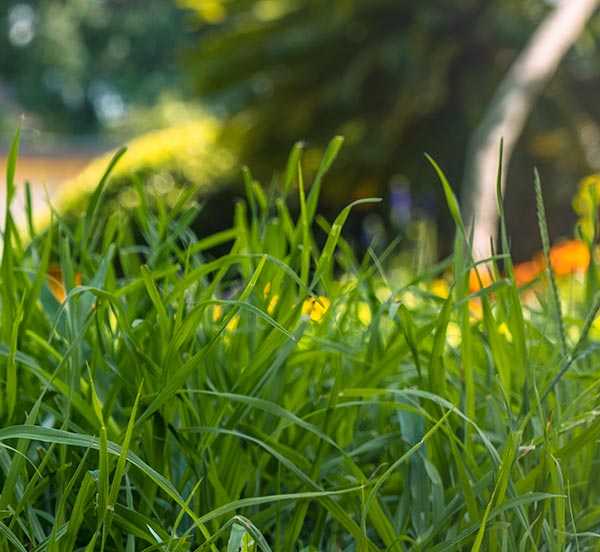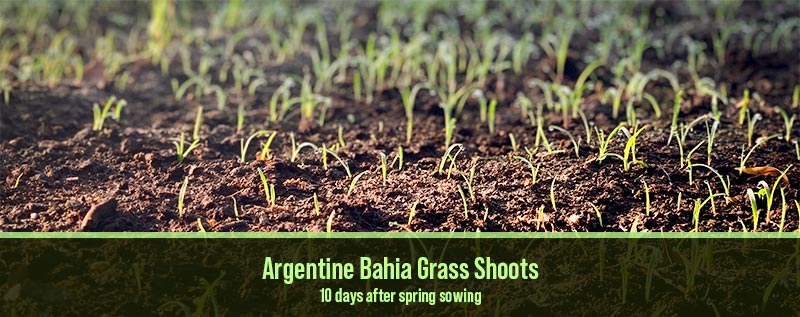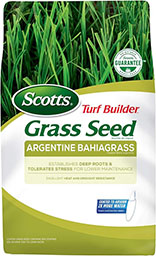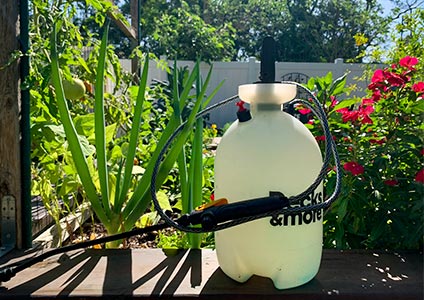Transform Your Lawn into a Luxurious Green Paradise
If you're looking to cultivate a stunning lawn in the warm and humid climate of the Southern United States, Argentine Bahia grass may be just the ticket. This resilient and low-maintenance grass variety has been a favorite of homeowners in Florida for years, thanks to its lush green color and ability to withstand drought and disease.
But perhaps you're wondering - is it really possible to grow a truly desirable Argentine Bahia grass lawn? The answer is a resounding yes, provided you take a few key steps to ensure optimal growth and health. From preparing the soil to choosing the right fertilizer and mowing techniques, there are several key factors to keep in mind when cultivating this beloved grass variety. And with a bit of patience and attention to detail, you can create a lawn that will be the envy of the neighborhood.
In addition to its deep root system and disease resistance, Argentine Bahia grass also boasts several other benefits that make it a popular choice for homeowners in Florida. First and foremost, Argentine Bahia grass is relatively affordable, making it an economical option for those on a budget. It requires minimal care compared to other turfgrass species, reducing the amount of time, effort, and money you'll need to invest in maintenance. This low-maintenance quality also makes Argentine Bahia grass a great choice for those who want a beautiful lawn without having to spend hours on upkeep.

Summary
- Choose the Right Time to Plant
- Prepare the Soil
- Select High-Quality Seeds
- Plant the Seeds Correctly
- Water Wisely
- Fertilize at the Right Time
- Mow to the Proper Height
- Aerate Regularly
- Control Weeds Effectively
- Monitor and Treat for Pests
Choose the Right Time to Plant:
Timing is crucial when it comes to planting Argentine Bahia grass in Florida. The optimal planting period for this grass is during the spring or early summer months, usually between mid-March and June. This is when the soil temperatures are warm enough to support germination and the growing season is long enough to establish a healthy root system before winter arrives. Planting during this period also allows the grass to take advantage of Florida's rainy season, providing ample natural irrigation for the seeds to establish themselves.

It's essential to avoid planting Argentine Bahia grass seeds during the hottest months of the year, such as July and August, as the extreme heat and potential drought conditions can negatively impact germination and seedling survival. Similarly, planting too late in the year, like in the fall, can result in inadequate time for the grass to establish a robust root system before the cooler temperatures of winter set in. By choosing the right time to plant, you're setting the stage for a thriving, green Argentine Bahia grass lawn that will be the pride of your neighborhood.
Prepare the Soil
Before planting your Argentine Bahia grass seeds, it's essential to prepare the soil to create the ideal environment for your new lawn. This process begins with soil testing to determine the pH level and nutrient content. Argentine Bahia grass prefers slightly acidic to neutral soil with a pH range of 5.5 to 7.0. Soil testing kits are readily available at local garden centers or through your county's extension office. Based on the results of the soil test, you may need to amend your soil with lime, or sulfur to achieve the optimal pH range.

Next, focus on improving soil structure and drainage. Argentine Bahia grass thrives in well-draining soil, as waterlogged soil can lead to root rot and other diseases. Start by removing any existing weeds or grasses from the area where you plan to plant the Bahia grass. Then, loosen the soil by tilling it to a depth of 4 to 6 inches, breaking up any compacted areas, and removing debris like rocks and roots. If your soil is heavy clay or has poor drainage, consider incorporating organic matter such as compost or well-rotted manure to improve its structure and water-holding capacity.
Finally, level and grade the area to ensure even water distribution and prevent pooling. This step is particularly important for maintaining the health and appearance of your Argentine Bahia grass lawn. Use a rake to smooth out any bumps or depressions and create a gentle slope away from buildings and other structures to facilitate proper drainage. By investing time and effort in soil preparation, you'll create a solid foundation for your Argentine Bahia grass lawn to flourish and establish itself quickly.
Select High-Quality Seeds
Choosing high-quality Argentine Bahia grass seeds is essential for establishing a healthy, lush lawn. Look for certified seeds from reputable suppliers, as this ensures that the seeds meet specific standards for germination rates, purity, and freedom from weed seeds or contaminants. Check the label for the seed variety, as different varieties may have unique characteristics, such as drought tolerance or disease resistance. Picking the right variety for your specific needs and location can make a significant difference in the success of your lawn. It's also important to buy fresh seeds, as older seeds may have lower germination rates. By selecting the best Argentine Bahia grass seeds, you're setting the stage for a thriving, green lawn that will be the envy of your neighbors.
Plant the Seeds Correctly
Proper seed planting is critical for the successful establishment of your Argentine Bahia grass lawn. Begin by calculating the recommended seeding rate for your lawn, typically around 5 to 10 pounds of seed per 1,000 square feet. Using too few seeds can result in a sparse and patchy lawn, while using too many can lead to overcrowding and competition for resources, hindering growth.

Next, choose the right equipment for spreading the seeds. A broadcast or drop spreader is recommended for even seed distribution across the planting area. If using a broadcast spreader, set the spreader to its lowest setting and apply half of the seeds while walking in one direction, then apply the remaining half while walking perpendicular to the first pass. This crisscross pattern helps ensure full coverage and minimizes the risk of bare spots in the lawn. For smaller lawns or areas with intricate landscaping, a handheld spreader may be more appropriate, allowing for greater precision in seed distribution.
Once the seeds have been spread, lightly rake the area to incorporate the seeds into the soil, covering them with about 1/4 inch of soil. This step is crucial, as seeds left on the soil surface are more susceptible to drying out, being washed away, or being eaten by birds. After raking, lightly roll the area with a lawn roller to improve seed-to-soil contact and encourage proper germination. Finally, water the area gently and thoroughly to settle the soil and initiate the germination process. By planting your Argentine Bahia grass seeds correctly, you'll create a strong foundation for a dense, green, and thriving lawn.
Water Wisely
Proper watering is essential for establishing and maintaining a healthy Argentine Bahia grass lawn. During the germination and seedling phase, consistent moisture is crucial to ensure successful growth. Water the seeded area lightly but frequently, aiming for at least once or twice daily for the first two to three weeks. Be careful not to overwater, as excessive moisture can lead to disease and other issues. The soil should remain consistently moist but not saturated.
Once the Argentine Bahia grass has established and reached a mowing height of around 3 inches, gradually reduce the frequency of watering while increasing the depth. This encourages the development of a deep root system, which is critical for drought tolerance and overall lawn health. At this stage, aim to water your lawn every 7 to 14 days, depending on the weather conditions and soil type. It's generally best to water your lawn in the early morning, as this allows the grass to dry before nighttime, reducing the risk of disease. Apply enough water to moisten the soil to a depth of 6 inches, which can be measured using a soil probe or a long screwdriver.
It's important to be mindful of Florida's water restrictions and conserve water whenever possible. Argentine Bahia grass is relatively drought-tolerant, which is one of the reasons it's an excellent choice for Florida homeowners. In times of drought, the grass may enter dormancy and lose some of its vibrant green color, but it will typically recover once regular watering resumes. By watering wisely, you'll support the growth and health of your Argentine Bahia grass lawn while also being environmentally responsible.
Fertilize at the Right Time
Fertilizing your Argentine Bahia grass lawn at the right time is essential for promoting vigorous growth and maintaining its vibrant green color. Bahia grass will begin to yellow when your soil is deficient in iron, so choosing the correct fertilizer or mix of fertilizers is essential. For starting new lawns from seed, we use a 50/50 mix of Sta-Green starter and Milorganite to add a bit more iron. We then work it in with a cultivator tool to ensure it is properly mixed with the soil. You can fertilize your lawn again approximately six to eight weeks after the seeds have germinated and the grass has reached a height of at least 3 inches. This will provide the necessary nutrients to support further growth and help establish the root system.

For established Argentine Bahia grass lawns, apply fertilizer two to four times per year, typically during the growing season. In Florida, this usually means fertilizing in the spring, early summer, and fall. Avoid fertilizing during the hottest months of the year, as the grass may be stressed due to heat and drought conditions. You will see mixed opinions about which fertilizer is best for Bahia grass, but in general, we are looking for high Iron content. This is why we commonly use Milorganite. If you notice yellowing, it's a sure sign of iron deficiency, and you can consider mixing a bit of Ironite with the Milorganite. One pound of Ironite per 100 square feet is recommended.
Mow to the Proper Height
Mowing your Argentine Bahia grass lawn at the correct height is crucial for maintaining its health and appearance. Bahia grass has a recommended mowing height of 3 to 4 inches, which helps promote deep root growth and provides better tolerance to drought and heat. Mowing at this height also helps the grass better compete with weeds, as taller grass can shade the soil and prevent weed seeds from germinating.
Sharpening your mower blades regularly is essential when dealing with Argentine Bahia grass, as its tough, fibrous texture can quickly dull blades. Dull blades tear the grass rather than making clean cuts, leading to jagged tips that are more susceptible to disease and moisture loss. To sharpen your mower blades, first, remove them from the mower, following the manufacturer's instructions for safety. Use a file, bench grinder, or specialized blade sharpener to sharpen the cutting edge, maintaining the original bevel angle. Regularly inspect your blades for damage and sharpen them as needed, ensuring a clean and precise cut every time you mow.
To further promote the health and appearance of your Argentine Bahia grass lawn, follow proper mowing techniques. Mow in alternating directions with each mowing session, as this helps prevent soil compaction and encourages the grass to grow more upright. Avoid mowing when the grass is wet, as this can lead to clumping and uneven cuts. Additionally, try to mow when the grass is no more than one-third taller than the recommended height, as removing more than one-third of the leaf blade at once can stress the grass and reduce its ability to photosynthesize. By following these mowing guidelines and maintaining sharp mower blades, you'll help your Argentine Bahia grass lawn thrive and maintain its lush, green appearance.
Aeration
Lawn aeration is an essential maintenance practice for Argentine Bahia grass lawns, as it helps alleviate soil compaction and promotes the healthy growth of roots. Compacted soil can restrict root growth, limit water and nutrient penetration, and reduce the overall health and appearance of your lawn. Aeration involves creating small holes in the soil, allowing air, water, and nutrients to penetrate deeper into the root zone, leading to a more vigorous and resilient turf.
For Argentine Bahia grass lawns, the best time to aerate is during the active growing season, typically in the late spring or early summer. This ensures that the grass has sufficient time to recover and fill in the holes created by aeration before the arrival of cooler weather. There are two main types of aeration equipment: spike aerators and core (or plug) aerators. Spike aerators create small holes in the soil using solid tines, while core aerators remove small plugs of soil, providing more effective relief from compaction. Core aeration is generally recommended for Argentine Bahia grass, as it provides more significant benefits in terms of root growth and overall turf health. Aerate your lawn every one to two years, depending on the level of compaction and foot traffic it receives. By incorporating aeration into your Argentine Bahia grass lawn maintenance routine, you'll promote healthier root growth, improve water and nutrient penetration, and maintain a lush, green appearance.
Control Weeds and Pests
Keeping weeds and pests in check is essential for maintaining the health and appearance of your Argentine Bahia grass lawn. A well-established and properly maintained Bahia grass lawn can usually outcompete most weeds. However, should weeds become a problem, selective herbicides may be necessary to control their growth. It's important to choose a product that is safe for use on Argentine Bahia grass, as some herbicides can harm or even kill this type of turf.


- Tenacity: We have had excellent luck with Tenacity for weed control. It is "a systemic pre-emergence and post-emergence herbicide for the selective contact and residual control of weeds in turfgrasses". It is safe for use on Argentine Bahia grass when applied according to the label instructions. It will require at least a 2 gallon sprayer, and works quite well when combined with a surfactant and dye.
- Image Herbicide: Image is a selective post-emergent herbicide designed to control a wide range of broadleaf weeds, sedges, and nutsedge. It is safe for use on Argentine Bahia grass when used as directed. Apply Image to actively growing weeds and follow the label instructions for proper application rates and timing.
- Spectracide Weed Stop for Lawns: Spectracide Weed Stop for Lawns is a selective post-emergent herbicide that targets over 250 types of broadleaf weeds without harming your Argentine Bahia grass lawn. Follow the label instructions for the best results and to avoid potential harm to your turf.
In addition to controlling weeds, it's important to monitor your lawn for pests, such as mole crickets, chinch bugs, and sod webworms, which can damage Argentine Bahia grass. Implementing an integrated pest management (IPM) approach that includes regular monitoring, biological control methods, and selective use of pesticides when necessary can help keep your lawn healthy and free of damaging pests. By effectively controlling weeds and pests, you'll help your Argentine Bahia grass lawn maintain its lush, green appearance and robust health.
Argentine Bahia vs St Augustine
Argentine Bahia grass boasts a myriad of advantages over St. Augustine grass, making it a superior and more low-maintenance option for Florida homeowners. Its deep root system and inherent drought tolerance reduce the need for frequent irrigation, conserving water resources and diminishing the risk of detrimental fungal diseases such as brown patch and gray leaf spot. Argentine Bahia grass demonstrates enhanced resistance to chinch bugs, a common pest that wreaks havoc on St. Augustine lawns, resulting in reduced reliance on chemical insecticides. Furthermore, its rhizomatous growth habit promotes rapid establishment and exceptional recuperative potential, enabling Argentine Bahia grass to quickly bounce back from wear and tear or damage. Additionally, the turfgrass exhibits an impressive ability to thrive in a wide array of soil types, from sandy to clayey soils, with minimal nutrient requirements. This adaptability minimizes the need for excessive fertilization and soil amendments, ultimately reducing both maintenance efforts and the potential for nutrient leaching into Florida's sensitive waterways. These attributes collectively render Argentine Bahia grass a more sustainable and user-friendly choice for Florida landscapes, providing homeowners with a lush, green lawn that requires less intensive management compared to St. Augustine grass.
"Green Lawns, An Ode"
Green lawns, a thing of beauty rare
Lush carpets beneath our feet we share
A luxury, a symbol of our care
A beauty beyond compare.
Soft blades brush our toes
The grass beneath us grows
A verdant sea that ebbs and flows
A place where tranquility glows.
Oh, the luxuries of a green lawn!
A paradise where nature's beauty is drawn
Where moments of peace and calm are born
And the heart is renewed at dawn.
Green lawns, a privilege we treasure
Where time slows and moments measure
A beauty that brings us pleasure
A haven we'll enjoy at leisure.